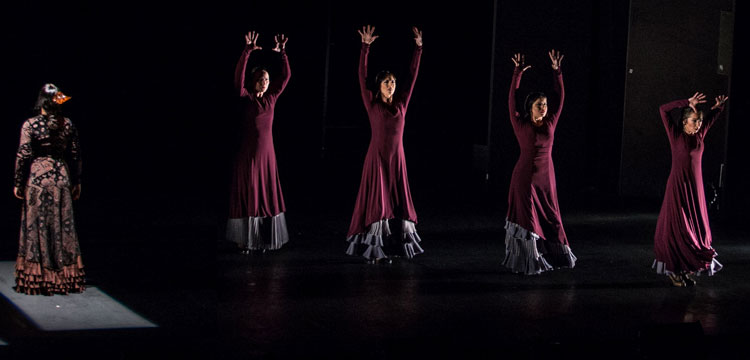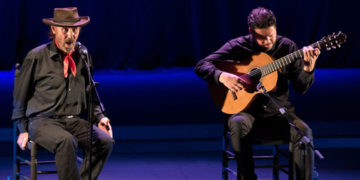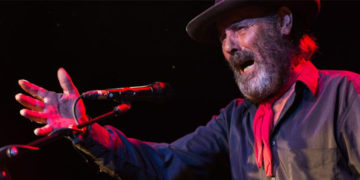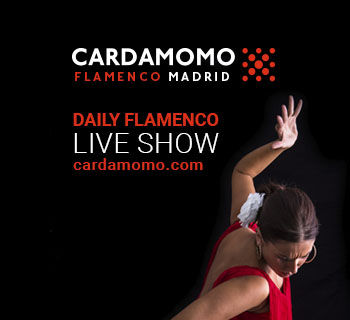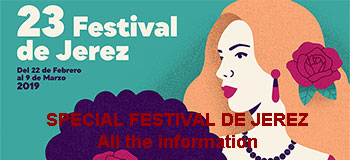Debut of “Bailaoras, el Nuevo Tiempo” with Mercedes de Córdoba, Carmen la Talegona, María Moreno, Lucía La Piñona, Rosario Toledo
José Manuel Gómez Gufi
It’s been a long time now that going to a flamenco dance show is a grab-bag of surprises. There are even people who claim to have seen flamenco dancing! Recent history shows that novelty and new aesthetic tendencies have been taken as positive action. If you happen to be in Madrid, go see the show “La Bailarina del Futuro” (Telefonica) which presents and analyzes the break with tradition of 7 women who rejected the stringent rules of the era: Isadora Duncan, Loïe Fuller, Joséphine Baker, Tórtola Valencia, Mary Wigman, Martha Graham and Doris Humphrey. Don’t forget that the Bolshoi Ballet debuted “Swan Lake” in 1877, which has continued to be the masterpiece of classic ballet. Remember too that Silverio returned from South America in 1864, eventually conforming the historic narrative of the development of flamenco singing.
The curtain goes up and the lights project a painting of Mondrian’s on the floor. Geometry of colors, a dancer with her back to the audience and a percussion solo with no recognizable rhythm, four women hurriedly enter and exit. No need to look for the meaning, there probably isn’t any. In 1984 the rock group Talking Heads made one of the best films in the history of rock music, “Stop Making Sense”, with the focal point being an empty theater which features song after song, the novel element being David Byrne’s suit. It was enough to enter the annals of rock history.
Friends with “common/flamenco/sense” tell me they didn’t get the beginning. You see the innards of the theater, and as far as I’m concerned, the only explanation I have is that I’d like a flamenco show to get underway at any other place, on the sidewalk across the street, in the middle of a traffic jam or looking for a place to park. That identifies me as a spectator, the role of the interpreters is to take me wherever they can. But getting down to business…
The woman with her back to the audience is Mercedes de Córdoba who fulfills her obligation of being flamenco in that context with the guitar of Juan Campallo, the percussion of Paco Vega and the singing of David el Galli and Pepe de Pura. The lighting effects create the transition and we see someone in the shadows looking like something from a comic. It’s an illusion, Carmen la Talegona draws a figure on the wicker chair wearing a metallic grey short jacket that reminds you of “Mad Max”, the transition is carried out by the two singers who step away from the edge of the stage to become players. Pepe literally makes the audience roar like lions.
María Moreno dances with bata de cola, they tell me it’s alegrías, I didn’t even notice. I’m deeply involved following the trail of the large shawl and the choreography of the long train, and it reminds me of the huge suit David Byrne wore in “Stop Making Sense”, and how hard it is to move that thing, like trying to maintain the “myth/of/the/flamenco doll/atop/a/flat-screen/TV”. The five women dance with the train and the shawl in a dazzling display that goes straight to the hard-disk of all our clichés, our myths and our legends…and, darn it!, María’s fringes get tangled in the next-to-last turn before letting the shawl fall upon the train…!!! But there’s no unnecessary spilling of blood, and one muses that when there are no more bullfights, we’ll still have shawl dances.
The dancers’ dresses are left at the rear of the stage. We get back to sobriety, and Lucía la Piñona is elegant in black and white (kudos for the wardrobe) and everything moves right along for Rosario Toledo to put the icing on the cake which is this brilliant show, and the applause dies down, the shouts of “ole!” and “bravo!”, because Enrique El Extremeño sings a trilla and a romance, and the five women return in street-wear (to kill themselves with those heels) and you get the idea: this is the best way to wrap things up with a bulerías finale as is only fitting. The heels add the circus touch of “the artist’s life is in danger”, and three of the five choose to dance barefoot. Special mention for Pepe de Pura who interprets a powerful version of Machin’s “Compromiso” and El Extremeño who improvised verses for each dancer. Then, the cheering, the “oles!” and the parading around the ring.
Photos:
Video:

photos & video: Rafael Manjavacas



